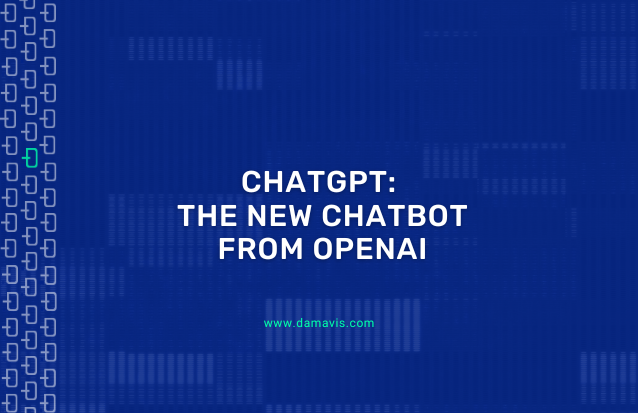Recently, the OpenAI team launched ChatGPT, a new deep learning-based conversational tool that promises to improve human-machine interaction in a variety of environments. ChatGPT is designed to understand natural language and provide consistent and relevant responses to questions or comments in real time.
ChatGPT: How does it work?
One of the main technical features of ChatGPT is that it is built on OpenAI’s GPT-3 model, which is one of the largest and most advanced language models ever created. GPT-3 is able to process text in a similar way to the human brain, allowing it to understand context and generate coherent and logical responses. This ability to understand context is key to ChatGPT’s ability to have smooth and natural conversations.
Another important feature of ChatGPT is its ability to handle complex contexts and provide coherent responses in long conversations. This is because ChatGPT uses a technique called “long-term memory“, which allows it to remember previous information in a conversation and use it to give more accurate responses.
Technical limitations
Despite its technical advances and customisability, ChatGPT also has its limitations. One of the main ones is that, like any other machine learning-based language model, ChatGPT can only generate coherent and relevant responses in the context of the conversations it has been trained to handle. If presented with a conversation outside its training range, it is likely to generate confusing or irrelevant responses.
Another limitation is that, although ChatGPT can hold fluent and natural conversations, it cannot yet fully replicate the complexity and flexibility of human language. It is possible that in some cases, the model generates responses that sound a bit stilted or mechanical, which may be an indication that you are talking to a machine rather than a human being.
Overall, ChatGPT is a promising tool that can improve human-machine interaction in various environments, but it still has limitations that need to be overcome in the future.
ChatGPT: How do I use it?
If you are finding the article so far interesting, I have to tell you that absolutely all this introduction has been generated by ChatGPT from entering as input the following text: “Create an article about ChatGPT in a technology blog outlining its main technical features and limitations.”.
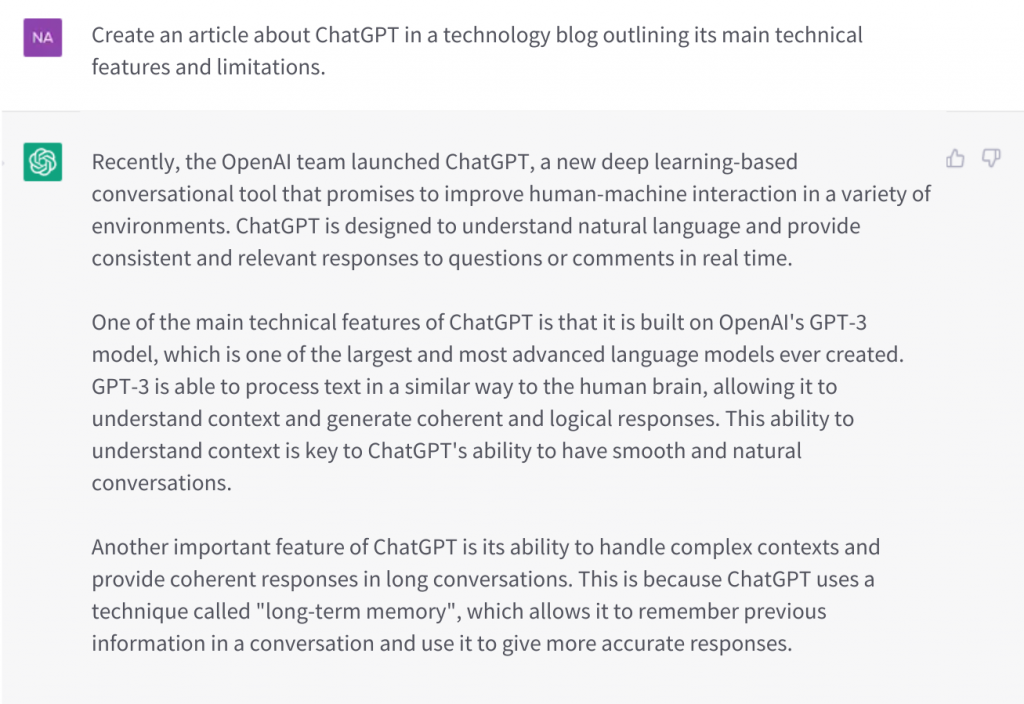
The fact that an article like this can be generated to a large extent by this chatbot is just further evidence of the potential of this model. However, its scope does not end here and the number of possibilities only depends on the user who puts himself in front of it.
Another of the most recurrent uses by users in the demo provided by OpenAI is code generation. The model is capable of generating lines of code in a multitude of languages as a result of having been trained with a huge amount of code repositories on the internet.
From simple code generation like the following example, where the model is asked to get the odd values from a list and add them up, to more elaborate examples like connecting to a database with a given query.
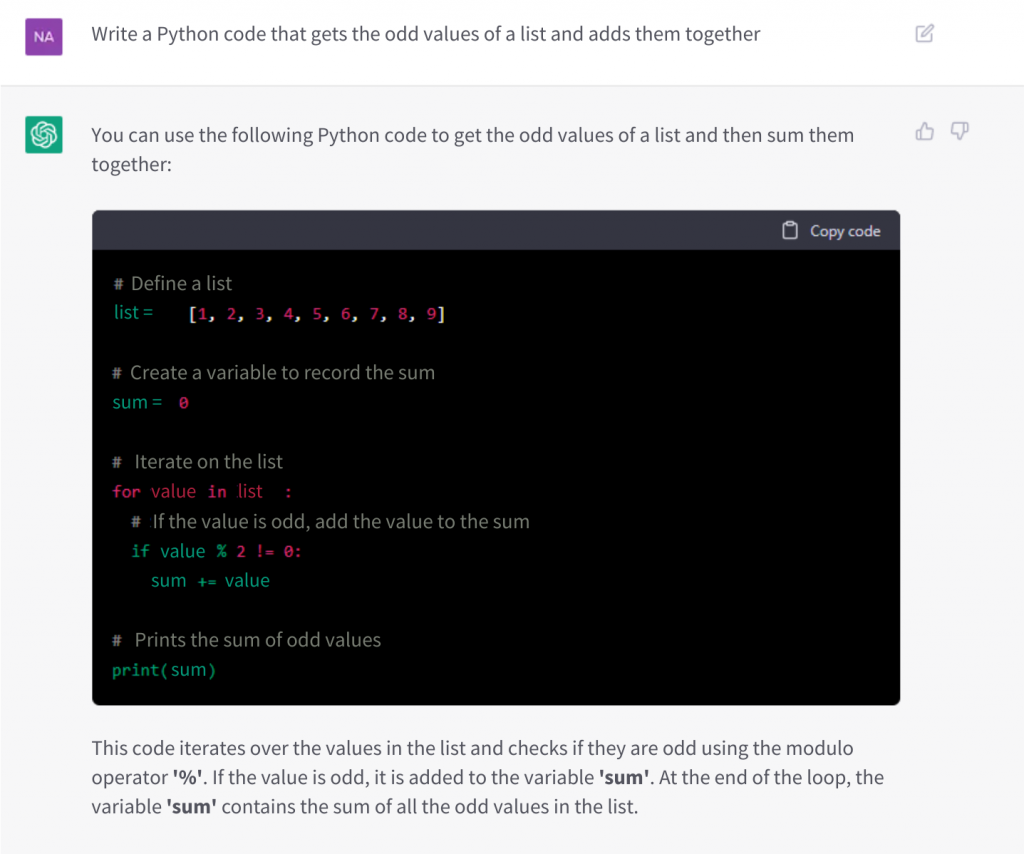

It should be stressed that such examples are not intended to illustrate the complexity of the code it generates but rather how human-machine interaction is completely natural and provides a valid solution that can be the starting point for a programmer who is just starting out in these tasks.
In the end, in these cases we can see how ChatGPT could develop, in a way, the role of tutoring in front of the user who is using it and how this could completely change the paradigm of online learning.
Another very striking example of the potential in terms of code generation is the ability to detect bugs in the code. For example, if we modify the above code and ask it to find the bug its response is as follows.
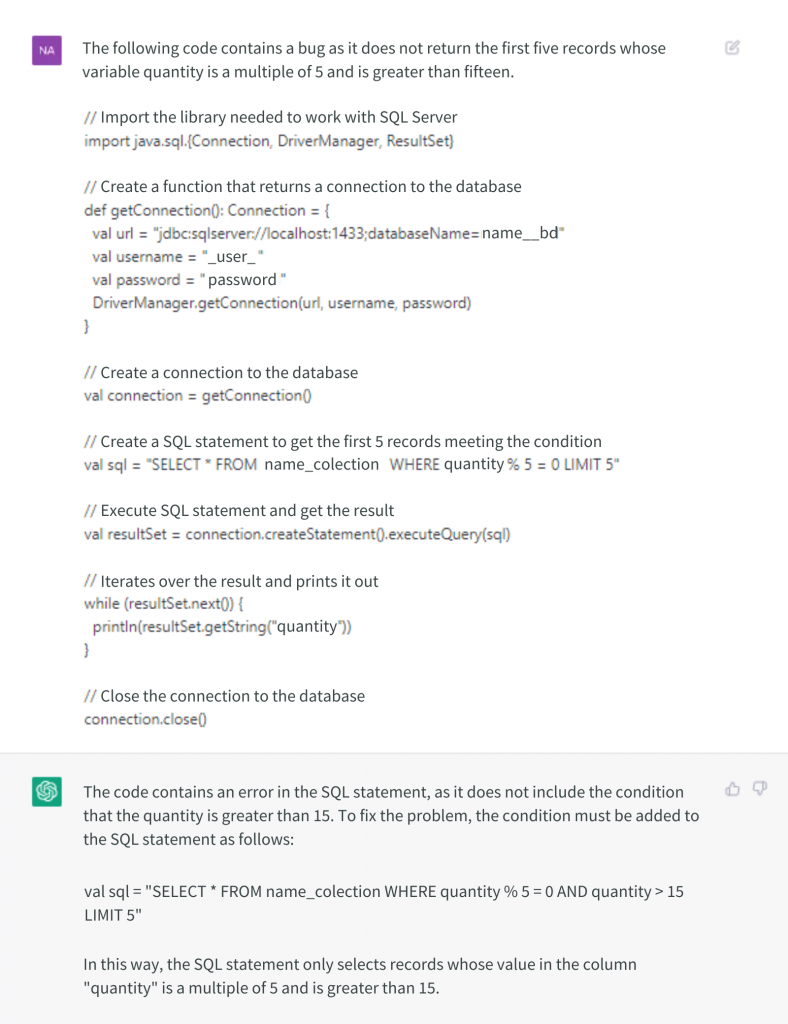
Once again, its ability to analyze the text that is introduced to it is practically human, perhaps the greatest compliment that any chatbot powered by artificial intelligence can receive.
Finally, it is worth noting that not only does it have the ability to generate objective texts, such as the introduction to this article, or to generate valid code, but it is also capable of creating fantastic stories, poems or even conversations about abstract concepts, simulating the interaction between philosophers who never shared an era.
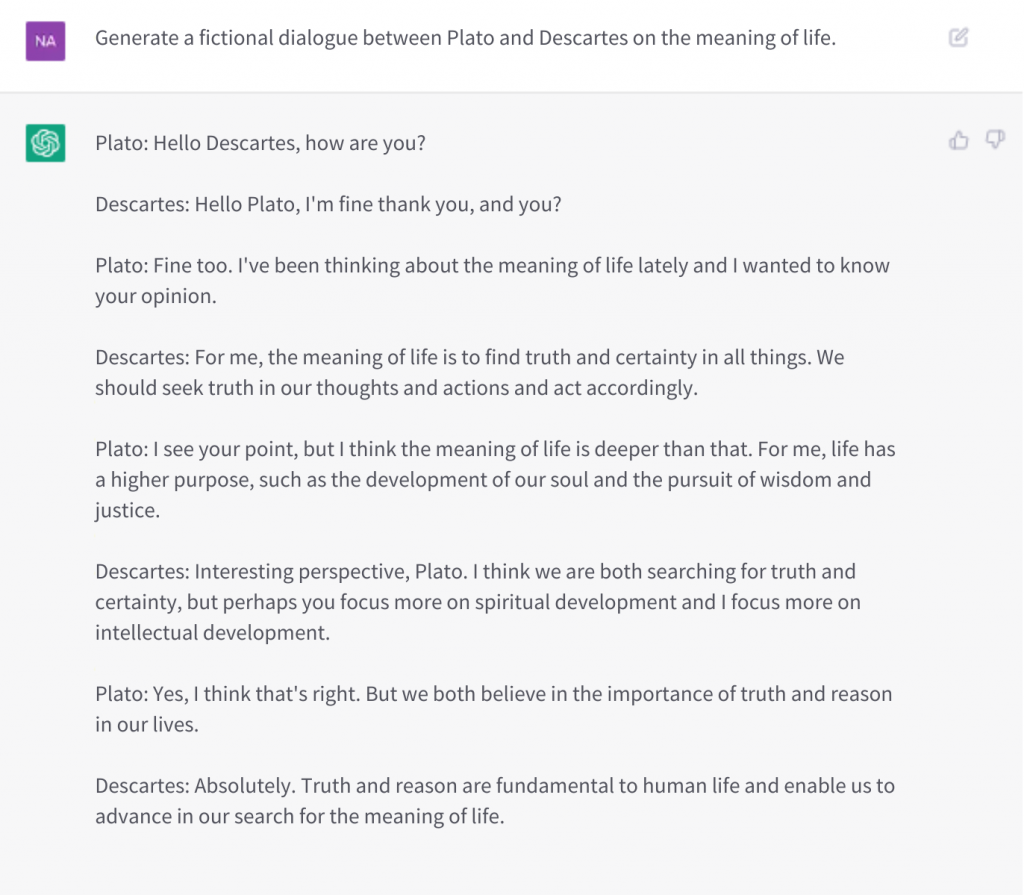
Conclusion
In short, the tool created by OpenAI sets a historic milestone in the development of artificial intelligence and highlights the many tasks, jobs or even leisure that will be affected by these technologies.
If you are interested in learning more about artificial intelligence and reading about the latest news related to this field, don’t miss Damavis’ blog.
If you found this article interesting, we encourage you to visit the Algorithms category to see other posts similar to this one and to share it on social networks. See you soon!

